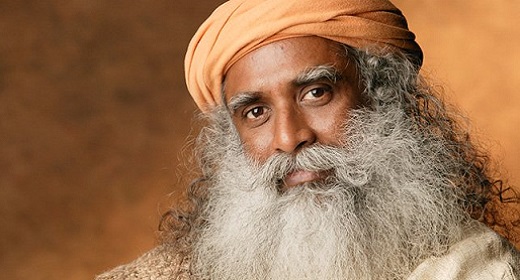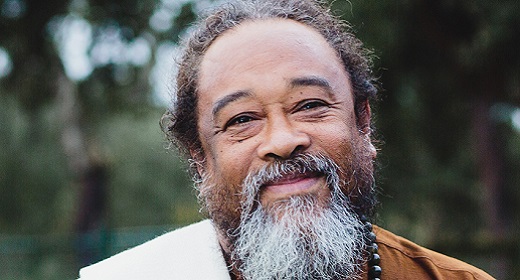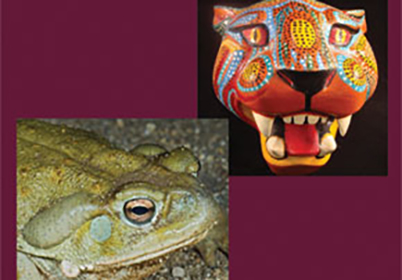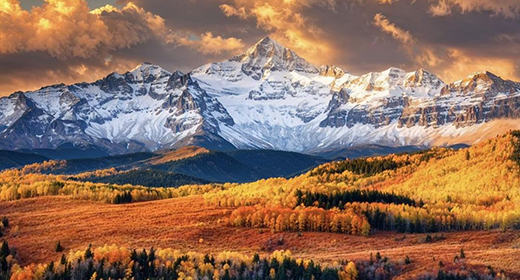by Dr. Clarissa Pinkola Estés: Closing address to the CTA National Conference.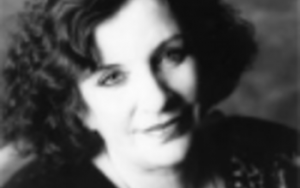 I came to speak to you today with a full heart. I would like to tell you about “the Church beneath the church.” The ones who told me about the Church beneath the church are my grandmothers.
I came to speak to you today with a full heart. I would like to tell you about “the Church beneath the church.” The ones who told me about the Church beneath the church are my grandmothers.
I came to know my grandmothers when I was an older adopted child. I was called into the priesthood as a child. I healed broken plants, and children, and dogs, and I pounded out hosts from Wonder Bread. The birds took one host apiece, but the dogs were greedy. They ate 40 or 50 hosts at a time! Some of my familiares, my relatives, would say, “Oh, isn’t that sweet. She’s playing priest.” And my grandmother Viktoría would flash a milky eye and say, “She is not playing.”
One day I would understand that genealogy is significant, and that apostolic succession is important. But we Catholics have a third tradition by which a woman becomes priest, and that is via parthenogenesis. This means to be conceived by a massive infusion of grace from One greater than myself, and I must answer the call. Parthenogenesis: developing into a new individual without being formed by merely human means.
My life deepened further when my grandmothers and my aunts, and nuns, consecrated me to the Blessed Virgin Mary and to Santo Niño, literally, “Saint Little Boy” — the Baby Jesus. I was consecrated at age six. I took the vow of Fidelity, meaning that I would do whatever Virgin Mother and the Cristocito asked of me, when and if I could hear them via the Holy Spirit, and when they could give me a sign. I promised that I would try to follow their wishes in all prayerful grace. All of us little girls who were consecrated at that time also promised our eternal virginity to Blessed Mother. As I used to whisper later as a girl-gang leader, “Two out of three ain’t bad, baby.”
Time went on. When I came home from my high school theology classes —I’d say something to my grandmother like, “I want to tell you what Ignatius of Antioch said about martyrdom.” My grandmother would say, “I want to tell you what Viktoría of Dombovar says about living life without being a martyr.” Whenever I brought home academic material, including much later during my psychoanalytic training, all my grandmothers and my aunts would correct it. (I know you have relatives like this. Otherwise you wouldn’t be laughing…)
I am what I am, for one other reason. I was raised daytimes by “the madwomen in black.” We didn’t have day care back then. We had Catholic school. I was raised by the great nuns of the world. They were fierce and beloved, cantankerous and difficult, horrible and wonderful. They were brave souls who marched for civil rights before The Civil Rights Act became contentious law to some.
During sophomore year in high school, our nun-principal brought Dorothy Day to us. We were in the midst of the Viet Nam war. Many of my male peers had already received their induction notices… to this day those men still remember their draft numbers. When Dorothy Day was asked in our high school auditorium what to do about the war and the draft, she said, “Fill the jails. Fill the jails.” It was a transformative moment. She was a grandmother of a woman, with huge power of soul. In spirit, she indeed was a nun, a priest, an eternal virgin, a lover of human beings without compare. She changed my life, for I could see that she started fires wherever she went, good fires, by throwing immense sparks from her soul.
People worldwide so often ask me, “How can you still be a Catholic, after all that has happened?” There are 3,000 reasons — each of you sitting here with me. Also, the nuns, priests, and all the heroes of Catholicism are somehow inside me. They nourish me, help me to enact what I am asked by a Voice Greater.
Grandmothers’ Wisdom
When we walked to church with my grandmother and were in view of the church, she would often say, “See that church?” “Yes, we see that church,” we would say. “That’s not our church,” she would say. “Yes it is, grandma, that’s
our church.” “No, no. Our Church is beneath that church. We don’t belong to that brick church. We belong to the Church underneath that church.”
This has stayed with me all my life. When people ask, “How can you still be a Catholic?” I think about the Church beneath the church, and Who lives there, that Heart of Christ that beats and throbs in the underground Church, regardless of the mayhem above it. You can hear that Heart if you lie on the earth. You can hear it at night in your dreams, in prayer, in song, in art… it throbs with endless and immaculate Love. I can feel it in “the Church beneath the church,” though I often cannot feel it in the church above ground. The underground Church is the place I return to, over and over again. Health of the Soul. True Refuge of Spirit.
My grandmother often led us in prayers. When we would pray the “Hail Mary,” we’d get down on our knees, all the mommies, the daddies, the grandparents, the grandchildren, the babies held in arms, the animals. While we were praying, “Hail Mary, full of grace, the Lord is with thee, blessed art thou amongst ALL women…,” my grandmother would be saying — under her breath, but so loud it drowned all of us out: “O my Mary, my sister, I am so sorry you had to give birth with only the poor animals to attend you. Your poor distraught husband…I am so sorry you had to be alone, because…. what did Joe know?! If I had been there with you, I would have held your thighs for you. I would have cut the cord for our beloved Baby Jesus.” And we would be bleating into the closing, “Holy Mary, Mother of God, please pray for us sinners, now, and at the hour of our death. Amen.” And my grandmother would always say, “A-MEN… and A-little-WOMAN!” The Church beneath the church.
I have a form of what I jokingly call “Catholic Tourette’s Syndrome.” It makes me say unguarded things sometimes for which I then must go to Confession. When CTA first invited me to come speak, they asked for a title for my speech. The Holy Spirit inflamed me, and before I could stop, out came: “Tell them the speech is called “The Holy Spirit is Really Pissed Off— and Is Coming Soon to a Church Near You.””
But, I had a second and far more reasonable thought. (Two out of three ain’t bad, baby.) “Alright,” I said, “I will read from Letter to a Young Activist During Troubled Times, a missive I wrote which now has literally millions of copies circulating worldwide on the Internet. And, I will talk as time allows, about Mary Magdalene, for she is the one who first saw the Living God return, that One who built and lives in “the Church beneath the church.””
Letter to a Young Activist During Troubled Times
Let me read you a bit of this letter: “Mis Estimados: Do not lose heart. We were made for these times.
“I have heard from so many recently who are deeply and properly bewildered, very concerned about the state of affairs in our world. One has to have strong cojones and ovarios to withstand much of what passes for good in our culture today. Abject disregard for what the soul finds most precious and irreplaceable, and the corruption of principled ideals, has become in so many places “the new normal.” It’s hard to say which one of these most egregious matters has rocked the people’s worlds and beliefs more. Ours is a time of almost daily jaw-dropping, astonishment, and righteous rage over the latest degradations of what matters most to civilized, visionary people. You are right in your assessments. The luster and hubris some have aspired to, while endorsing acts so heinous against children and elders and everyday people, the poor, the unguarded, the helpless, is breathtaking. Yet I urge you, and I ask you, I gentle you….do not spend your spirit dry by bewailing these difficult times. Especially, do not lose hope, most particularly because the fact is: WE WERE MADE FOR THESE TIMES. For years we’ve been practicing, learning, been in training for, and just waiting to meet on this exact plain of engagement. I cannot tell you often enough that WE ARE DEFINITELY THE LEADERS THAT WE HAVE BEEN WAITING FOR….
“I grew up on the Great Lakes, and I recognize a seaworthy vessel when I see one. Regarding awakened souls: there have never been more awakened souls across this world than there are right now. Not only that…they are fully provisioned, and they are able to signal one another, as never before in the history of humankind. Via electronics, in the mail, through the air, by satellite, across the land, we are able to signal one another in ways that were unthought of, unheard of, before this time. So, if you will allow me, I would take your hands for a moment, and assure you that you are built well for these times. And despite your stints of doubt and your frustrations in facing all that needs change right now, right this minute, or even feeling you have lost the map entirely, you are not without resource, and you are not alone.
“Look out over your own prow. Look out and see: there are millions of boats in the water with you. Millions of righteous souls on the water with you. In your deepest bones you have always known this is so. Even though your veneers may shiver from every wave and stormy roil, and even though you feel you might fly apart in these times, I assure you that the long timbers that make up your bow, your rudder, and your prow come from a greater forest. That long-grained lumber is known to withstand storms, to hold together, to hold its own, and to advance, regardless of what else goes on in your life, or in the world. We’ve been in training for dark times such as these since the day we assented to come to earth. For many decades worldwide, souls just like us have been felled and left for dead in many ways, over one deadly thing or another. It is true that via assault or ambush, various cultural institutions have come to depend upon decimating the soul as part of their commercial activity. So, we have a history of being gutted. But, we also, of necessity, have perfected the knack of resurrection.”
No matter how many times we are killed, we go into a lacunae and revive ourselves. “No matter how many times we are brought down, no matter how many times we are exiled, no matter how many times we are told we have no worth, no merit, no credit… we come back.” It is the Catholic way. “We come back. And this is as true and sturdy a prognosis for the destroyed worlds around us, as it is for our own once mortally wounded selves.” Through conscious tikkun olam, “the repair of the world soul,” the earth and her people are resurrected again through us, and in us, and we all live forward into a stronger, more able and pure state.
Mary Magdalene as Exemplar
Let me speak to you now about Mary Magdalene. She was one of the quintessential souls who had knowledge about how to resurrect herself. I have often thought about the seven demons said to have been taken out of her. When I first read about her life in Spanish, I thought she was relieved, not of siete demonios, but of seven sorrows, seven dolores. I wondered: what would a woman’s seven dolores mean? What would it mean to be relieved of them? Could it be that she would be held in esteem instead of depreciated? Could that be one way — one demon and one sorrow gone? Would she be valued for the heart and soul of her intuition — another demon and sorrow gone? When she said what she saw, and if others could not yet see the same, they would still honor her visions— another demon and sorrow gone. And so on.
When I was old enough to read, I also read the King James version, in its beautiful Elizabethan English. When the Magdalene came to the sepulchre to see if she could minister with herbs and oils to Jesus who had been crucified—she found the tomb empty. She cried to the angels sitting inside the tomb, “…they have taken away my Lord, and I know not where they have laid him.” She begs the beings of Light to tell her where her Lord has been hidden, so she might take Him back.
Every time I would read this, I would cry. I felt that way too. So many times in my life I thought, “Thou hast taken my Lord away from me, and I know not where you have laid Him. Tell me, please, where have you taken Him, so I can go to there and give care to Him again?”
Did it happen for the first time when I was adopted, and my brother and I were adopted into separate families? I, personally, went from the frying pan into the fire… from Mexicano parents to immigrant Hungarian parents. (All of whom, interestingly enough, have two things in common: Mexicanos and Magyars both love hot peppers, and they love to dance themselves into the ground. How lucky can a girl get?)
Yet I mourned for my natal mother and father, sisters and brothers, for many years. When I was a late teenager, I went to Catholic Services and asked, “Please help me find my mother and father and sisters and brothers?” The priest who was head of Catholic Charities said: “You are mentally ill to want that.” I wept. I felt like Mary Magdalene. “I have sought to tend to my wounded Lord, and someone has taken Him away.” I did not know then, that many years later via this experience, I would become a force in the national adoption movement, insisting that medical records and family heritage and ethnic stories and roots be handed down to adoptees as an a priori human right. But, at the time I was turned away , I was bereft. I worried so for my mother, father, brothers and sisters. Where were they? Were they alright? Were they dead or alive? Did they need my help?
In the meantime, my adoptive family searched for and found what tatters were left of their relatives who had survived the confiscation of their farms by the Nazis in Eastern Europe, who were driven from their land, their children killed, and who had endured slave labor camps during World War II. Soon, waves of broken refugees streamed to our home. Imagine 17 refugees in one tiny twobedroom home with one bathroom, no garage, and only a kitchen, a living room and spooky cellar. But I learned so much. They needed me; to read for them, for they could not. They especially needed me to show them life through the eyes of a child filled with hope.
The Notre Dame Library
Because my family could not read, or did so haltingly, some were proud of me because I could. When I was 10 years old, one of my refugee aunts who had found work in the cafeteria at the University of Notre Dame said she had arranged with a priest that I could go to the Notre Dame library and look at any book I wanted to look at. Such a thrill. There were no books in my house. I could hardly wait. We dressed me all up in my best clothes like I was going to Mass on Sunday. I had a white collar and I remember ironing the little lace around the edges. I wanted to look perfect. I went to the door I had been told to go to. I knocked on the tall door, and a priest came to its little window. I said, “I am here to read the books.” The priest gestured: NO! I repeated, “But, I am here to read the books. Is Father O’Brien here?” The priest behind the glass shouted: “NO FEMALES. NO FEMALES.” It was some other priest, not Father O’Brien. I thought:, “My Lord has been taken from me, and I know not where they have laid Him.”
But, since I was called to the priesthood, I stood at that tall door with my arms out in the form of a cross until it got dark, offering up penance, because I had been taught that you could redeem a soul in purgatory if you made a sacrifice. I stood there until my aunt, desperately looking for me, came and collected me. I remember the look on her face. She said, “Some day, because you can read, you will come back here and you will teach them.” Well, I have not yet been invited to Notre Dame, but hopefully some day. If I am, I would like to speak in the library! The first thing I would like to say is, “YES, FEMALES! FEMALES, YES!” (Even though now, fifty years later, many females are there, which is a blessed thing.)
So life continued. I could see that each time something devastating occurred, I was somehow eventually able to again find the Body of Christ. Through my prayers. Through devotions to Blessed Mother, who would speak to me, and give me signs, and tell me how to do it, often in service to others — which was not always easy. But I wanted to fulfill my consecrated promises. (At least the two that I could keep.)
That third issue, virginity, eventually brought me to a great sorrow. One moment after high school graduation, I became pregnant without being married. I was abandoned. You have to try to understand the times back then. People were so afraid of a woman who was pregnant and not married. Instead of what we today adhere to, ‘family values,’ with everyone coming around to say, “How can we help you to keep this child, to support this child, and be family with your own blood of your blood, bones of your bones?” — instead they thought: “It would be better if we sent you far away where no one knows you, and where you are alone in your sorrow and pain.” Thus, I was forsaken by the sensitive father of my child, whose parents came from a higher class, whereas we were the lowest of the low. There was not to be a marriage. I was exiled by my poor adopted parents, who could not bear the shame they feared would be rained down upon them by other people. I went away to Misericordia, a Catholic institution in Chicago, 90 miles away, within constant whiff’s reach of the Stockyards. The windows were painted green so you could not see out. For six months I never saw the unfettered light of day. I took care of what they called “damaged and deformed” babies there. Many were dying, but also, many had Down’s Syndrome, autism, and hydrocephalus, hermaphroditia, or were in constant convulsions, and we, young, often backwoods girls, from age 12 to 18, were the ones who, although unpaid, cared for the children daily in that house of sorrow. We fed the little babies. We bathed them tenderly. We loved them.
I cannot tell you how shocked I was to see perfectly wonderful little children shut away. Some ‘experts’ back then advised that when children had Down’s Syndrome, autism, or other, they should be “institutionalized,” that the family should go on to have other, “normal” children. Precious few of the institutionalized children had visitors. And though family visitors came on Sundays for most of the other girls, I had no visitors. I was looking at the empty tomb again, and angels were asking me: Woman, why weepest thou? And I was saying: “I am looking for the Living God. Please tell me where have you taken Him?” And then, a man I hardly knew, a priest who had heard of my agonista, came to Misericordia — one of the most miserable places on the face of the earth. He came and brought a host — (not made of Wonder Bread, a real one) and he gave it to me. I felt like I was baptized back into the Body of Christ again, by the kindness of that singular soul who came to me in my time of travail.
Birth and rebirth
When I gave birth to my first child, a beautiful little girl, I knew they would wrench her from my arms. They practiced with us that this would happen: “You will give birth, you may or may not have anesthesia, you will suffer for your sin. When you give birth, you cannot see the child. That will be the end of it. We will come a few days later, while you are still bleeding, and you will surrender, you will sign this child away to a real home and a real family. You will forget. You will go on.” On, I went indeed. But forget? Never. Never. A mother’s heart is not made to “forget” precious life.
The day I entered the charity wards, through many hours of labor, I was alone. I gave hard birth to my baby, but I saw her, because somehow, I seized the nurse by the arm as she was carrying my baby away. I said: LET ME SEE MY CHILD. The nurse turned by my force, and in her arms was my beautiful child, blood of my blood, bones of my bones…the only blood relative I had seen since I was a young adopted child. I was weeping copiously, and I wiped a handful of my tears from my face and put them on my child’s forehead. Somehow my voice blazed out of me, “I baptize thee…I baptize thee in the name of the Father, and of the Son, and of the Holy Spirit.” Then the nurse turned away with my child. But I knew… that I had baptized one of the most important souls I would ever bring to this earth. Baptism by water, by blood, by fire, by desire, all together at once.
Many years would pass before this child would find her way back to me, as an adult. Many adoptees, when they understand they have been separated from their natal mothers and fathers, give voice to a bodily sensation some feel; a sense of loss along the front of the body. For my child, there would be one place where she was ever marked with limitless love– there, on her forehead.
When the Magdalene sees the Gardener near the tomb, He says, “Woman, why weepest thou?” She essentially says: I am looking for the Love of my life, the One who means everything to me, the one who, no matter what happens to me, can lift me up, take care of me, and I, Him. And Jesus then speaks only her name: Mary. Maria. Mir-yam. He is asking, “Do you not recognize Me in My new form?” She falls to her knees, the way anybody would who is in love, and she takes him into her whole self, saying, “Rabboni.” Teacher. My Teacher. What is a teacher, a rabbi, a rebbe, but someone you love more than anyone in the world, because they eat with you, walk with you, guide you, listen to you, they correct you, they soothe you, they lift you up. What is a teacher but all those beautiful, wonderful words: comadre,copadre, niño, hermano, hermana, special mother, father, child, brother and sister.
This is what I have found, over and over, in my life. I must continually reach beyond my ordinary knowings and recognize Rabboni in a new way. If I can find where they have laid my Love in every difficult situation, then I somehow, somehow, will be buried and baptized again into a new form, safe in the arms of Who so lifts me, makes me whole, makes me know I can manage the next step, no matter what I face.
Belting out the Ave Maria
I was in Guatemala, El Salvador, Honduras and Nicaragua in the 1960s. While running small gun parts, amongst other things, I was detained by the guerrillas. If you are a poor USA citizen and in peril, chances are the American embassy will willfully not know your name. In those moments of despair, surrounded by men with food on their moustaches that I could smell when they came near me, with men circling me and some saying, “Mmm. Nice girl. Maybe she needs to be raped today,” I prayed for help. Thus, I stood in my little room singing the Ave Maria at the top of my lungs. Why? Because when I saw that “they had taken my Lord,” I heard a voice: “Do you not recognize me? I come to you in song. Sing. Sing.” So I sang. “A–ve Maria…” I was shaking. “Gra–tia plena…” I was belting it out, over and over to the best of my feeble abilities. Soon, the Comandante appeared: “You must stop singing, La Señorita! You are driving my men crazy!” I said, “If you release me, I will not sing any more.” He said: “We will see about doing so right away!” Mary. Maria. Mir-yam. Do you recognize me now?
I’ve only spoken to Catholics once before. There was a TVnewscaster where I live, who had gotten grief because her news style was to stand while wearing a shortish skirt, and lots of attitude. Her station made a commercial on her behalf using a Catholic church in our town. They showed the confessional; a woman was coming to confess that she was watching this newscaster on TV. The priest was giving her quasiabsolution. The “Alleluia” sounded in the background. Reflected in the eyeglasses of the priest was the newswoman, as though he might be dreaming of her.
There are some things in the culture that cannot be allowed to stand without comment. Making a parody of confession publicly, making a seeming joke of priests who have taken a vow of celibacy and are often struggling with it, cannot be right. So I wrote a letter to the diocesan newspaper saying this was not acceptable, that it seemed a form of blasphemy (not a word I use lightly) and ought be contained. I thought the Holy Spirit via mi Madre was asking me to do this. I received a call from the chancellor of the diocese. “Dr. Estés, the Catholic Press Association is coming, and we would like you to be the keynote speaker.” I was so excited. I was going to be speaking to 500 of my own colleagues. How wonderful.
A few days later however, I received a phone call from my staff. “Have you seen the newspaper this week?” Unbeknownst to me, Sister Helen Préjean had been the original invited speaker. Then apparently, someone in the hierarchy felt she had written something they didn’t quite approve of, so she had unfortunately been rather disinvited. Now, the national Catholic news media was perhaps thinking she and I were in a fight, that I had done a TKO by coming in and taking her place. To circumvent any such thing, I called New Orleans direct. “Sister Helen, this is Clarissa Pinkola Estés up in Colorado.” In her Southern accent she said, “Well, Clay- RISS-a!” She was so gracious. She said, “I am coming to Colorado to do a benefit at Dismas House, and I would love to take you to lunch.” “OK,” I said, “I’ll call the media.” We became fast friends. I dedicated my speech at the Catholic Press conference to several good souls, including Sister Helen.
However, apparently someone in the national Catholic media did a search on the Internet. The next week I read in print about one of my audiotapes called, “How to Love a Woman,” and that on the flap copy was written, “For women who love women, and for men who love women.” (True.) Furthermore, eclipsing Sr. Préjean’s presumed peccadillo entirely, they noted I had been named “an honorary lesbian” by a radical women’s group in San Francisco. (True.) Well, local newspapers bled it all over their pages under headlines like, “At Diocese, Estés Raises Eyebrows.” (Who was raising whose eyebrows at whom was unclear.) The new Bishop had just been appointed, and appeared to be doing everything he could to backstroke as far away as possible. Reporters called me to ask: “Are you a lesbian?” I meant to make then laugh at the lack of perspicacity in their question: I said, “No, I’ve not been fortunate enough in this lifetime.”
A stillborn child
I spoke to the Press Association with family and pastoral friends present. It was a blessed occasion for it introduced me for the first time to many brave and outspoken journalists in the Catholic press community. But I also carried what had become a chronic heavy heart that night, for not very long before, we had lost our firstborn grandchild. Angelito came into the world, a perfect 9 month full-term baby boy who died ‘in utero’ the day before his due date. I have been in hell many times. But never with my whole family before. After Angelito’s birth, as we held him for hours, person after person at parishes kept telling us a child born dead could not be baptized. “Where have they taken my Lord?” But one brave priest came. He baptized little Angelito with infinite tenderness. We felt some peace on that count. In our broken states, we felt that this child’s soul had gone on, but we talked about how maybe if a new body could be created … that perhaps every soul waiting to come here was just waiting for a body sturdy enough… that there might be more than one chance for that soul.
Gargoyle and bishop meet
After the Catholic Press Association event, we went to see the bishop. You’re probably wondering why. Holy Spirit told me: Take your elderly father, your grieving daughter who has just given birth to a beloved dead child, and her poor husband, and take your own sorrowing husband and yourself, and go to ask for the bishop’s blessing. I remember asking, “Do I have a second choice? But we went. My father was 88 years old at the time, and he sat in the bishop’s chambers looking like a gargoyle. (I can tell from your laughter that you must have a father like that too. Or maybe you are a father like that!) My father, spoke such broken English that others would ask me to translate his English to English. (He always went to confession to a priest who spoke English only. I used to say, “But Dad, the priest doesn’t understand your Hungarian or your English.” And my dad would say, “Ya, ya, he understands all he needs to.”)
So, we were sitting there, my daughter and my son-in-law and my husband and my father and I, but we were halfway invisible people, for our pain was still so great. We were still as though walkingdead. We said to the bishop. “We are hoping for another pregnancy, and hoping that it might occur soon, so that this little soul that is wanting, waiting to come to us, will be able to come to us.” And the bishop, for his own reasons, snapped, “That’s not Catholic.” We did not understand. But, I heard my father say under his breath: “Dat’s not very…Bishop.”
Blessed be the gargoyles of the world. What came from that moment was a strong reminder to myself and our family, that when faced with the pain of others, to try to make a loving response rather than a rhetorical or rote response, for the heart is not healed by rules, but by love steeped in the imitation of Christ. I think in “the Church beneath the church,” there are ever loving replies to the cries of the heart, ones that strengthen souls to thrive, and to give to others what has been given to them. The last lines of “Letter to A Young Activist During Troubled Times,” are these: “The good words we say and the good deeds we do are not ours; They are the words and deeds of the One who brought us here. In that spirit, I hope you will write the following words on your wall: When a great ship is in harbor and moored, it is safe, there can be no doubt. But that is not what great ships are built for…” And so may it ever be for you my dear friends.
Laughter is a form of prayer that I have aspired to with you today…thus, I hope that you have prayed very deeply and hard during our time together. A closing blessing on you then, in all fullness of heart for you then…. A-MEN…. and A little-WOMAN!
Dr. Clarissa Pinkola Estés, scholar, poet, and
Jungian psychoanalyst, was a post-trauma
specialist at Columbine High School and community
for four years after the 1999 massacre.
She is the best-selling author of “Women
Who Run With the Wolves”. Full text of “Letter
to a Young Activist During Troubled Times” is
on the CTA website: www.cta-usa.org


